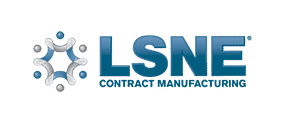Request Demo
Last update 09 Oct 2025
Subasumstat
Last update 09 Oct 2025
Overview
Basic Info
Drug Type Small molecule drug |
Synonyms TAK 981, TAK-981 |
Target |
Action inhibitors |
Mechanism SAE1 inhibitors(SUMO1 activating enzyme subunit 1 inhibitors), Small ubiquitin related modifier inhibitors |
Therapeutic Areas |
Active Indication |
Inactive Indication |
Originator Organization |
Active Organization |
License Organization- |
Drug Highest PhasePreclinical |
First Approval Date- |
Regulation- |
Login to view timeline
Structure/Sequence
Molecular FormulaC25H28ClN5O5S2 |
InChIKeyLXRZVMYMQHNYJB-UNXOBOICSA-N |
CAS Registry1858276-04-6 |
External Link
| KEGG | Wiki | ATC | Drug Bank |
|---|---|---|---|
| - | - | - |
R&D Status
10 top R&D records. to view more data
Login
| Indication | Highest Phase | Country/Location | Organization | Date |
|---|---|---|---|---|
| Refractory Multiple Myeloma | Phase 2 | United States | 20 Apr 2021 | |
| Refractory Multiple Myeloma | Phase 2 | Canada | 20 Apr 2021 | |
| Relapse multiple myeloma | Phase 2 | United States | 20 Apr 2021 | |
| Relapse multiple myeloma | Phase 2 | Canada | 20 Apr 2021 | |
| Cervical Squamous Cell Carcinoma | Phase 2 | United States | 17 Aug 2020 | |
| Cervical Squamous Cell Carcinoma | Phase 2 | United States | 17 Aug 2020 | |
| Cervical Squamous Cell Carcinoma | Phase 2 | Japan | 17 Aug 2020 | |
| Cervical Squamous Cell Carcinoma | Phase 2 | Japan | 17 Aug 2020 | |
| Cervical Squamous Cell Carcinoma | Phase 2 | Brazil | 17 Aug 2020 | |
| Cervical Squamous Cell Carcinoma | Phase 2 | Brazil | 17 Aug 2020 |
Login to view more data
Clinical Result
Clinical Result
Indication
Phase
Evaluation
View All Results
Phase 1 | 3 | (Part A: [14C] Subasumstat) | xjjawutkxd(gpbeuyipbi) = svzfcwmgft xpdjakfrwc (rvjuwntagn, 34.5) View more | - | 06 Oct 2025 | ||
(Part B: Subasumstat) | xsmhaxumlf = rptmaotoqv xxlvaevhrj (sqeqrvzngg, maflaukrgn - kdwhbzetrj) View more | ||||||
NCT03648372 (AACR2024) Manual | Phase 1/2 | 109 | ihzygmqjsb(aifmfcunvk) = In skin samples collected 1-3 hours after D8 dosing, suba ≥10 mg demonstrated dose-dependent TE as seen by suba-SUMO adduct formation and dose-dependent SUMO2/3 inhibition at ≥60 mg pmllmhalvk (ahefdoqhfc ) View more | Positive | 08 Apr 2024 | ||
Subasumstat 90 mg BIW | |||||||
NCT04381650 (ASCO2022) Manual | Phase 1 | 43 | ocdplcqplo(mlyxfymisq) = lellhvcqxy ewjmbrlton (sdwidprdrl ) View more | Positive | 02 Jun 2022 | ||
Phase 1 | CD20 positive Non-Hodgkin Lymphoma CD20 Positive | 24 | lqfijsinjn(iystbmtbot) = none orllyaixpu (mfkrjnyfcm ) View more | Positive | 05 Nov 2021 |
Login to view more data
Translational Medicine
Boost your research with our translational medicine data.
login
or

Deal
Boost your decision using our deal data.
login
or

Core Patent
Boost your research with our Core Patent data.
login
or

Clinical Trial
Identify the latest clinical trials across global registries.
login
or

Approval
Accelerate your research with the latest regulatory approval information.
login
or

Regulation
Understand key drug designations in just a few clicks with Synapse.
login
or

AI Agents Built for Biopharma Breakthroughs
Accelerate discovery. Empower decisions. Transform outcomes.
Get started for free today!
Accelerate Strategic R&D decision making with Synapse, PatSnap’s AI-powered Connected Innovation Intelligence Platform Built for Life Sciences Professionals.
Start your data trial now!
Synapse data is also accessible to external entities via APIs or data packages. Empower better decisions with the latest in pharmaceutical intelligence.
Bio
Bio Sequences Search & Analysis
Sign up for free
Chemical
Chemical Structures Search & Analysis
Sign up for free




